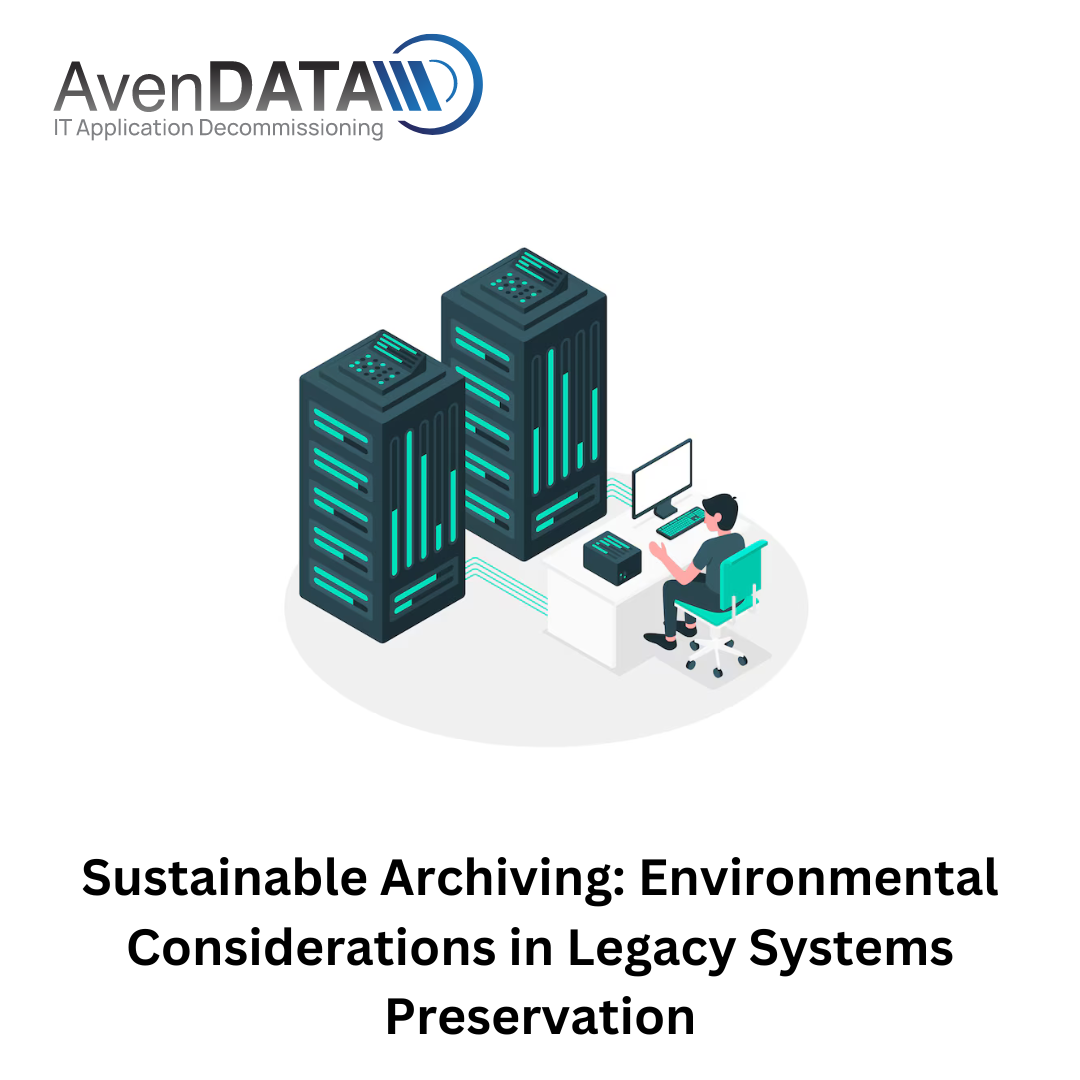Introduction
In the age of increasing environmental awareness and corporate sustainability initiatives, the preservation of legacy systems takes on new significance. While the focus has traditionally been on retaining historical data and ensuring accessibility, organizations are now grappling with the environmental impact of legacy systems preservation. "Sustainable Archiving" represents a paradigm shift in how we approach archive management, taking into account not only the preservation of valuable data but also the environmental considerations associated with legacy systems preservation.
The Environmental Footprint of Legacy Systems Preservation
Legacy systems preservation comes with its own environmental footprint, stemming from factors such as energy consumption, hardware maintenance, and storage requirements. Traditional archival methods often involve the use of on-premises servers and data centers, which consume significant amounts of energy and contribute to carbon emissions. Additionally, the disposal of outdated hardware and equipment can further exacerbate environmental concerns, leading to electronic waste accumulation and potential pollution.
Implementing Sustainable Practices in Archive Management
To address environmental considerations in legacy systems preservation, organizations must implement sustainable practices in archive management. This may involve adopting cloud-based storage solutions, which offer scalability, efficiency, and reduced energy consumption compared to traditional on-premises infrastructure. Cloud providers often employ energy-efficient data centers and employ renewable energy sources, reducing the environmental impact of archive storage. Additionally, organizations can explore virtualization techniques and data deduplication strategies to optimize storage space and minimize resource consumption.
Balancing Preservation with Environmental Responsibility
Achieving sustainable archiving requires striking a balance between preservation goals and environmental responsibility. Organizations must prioritize the preservation of valuable data while minimizing the environmental impact of legacy systems preservation. This may involve conducting regular audits of archive systems to identify areas for optimization and efficiency improvements. Additionally, organizations can explore alternative storage solutions, such as tape-based archiving or cold storage options, which offer lower energy consumption and reduced environmental impact compared to traditional disk-based storage.
Embracing Innovation for Sustainable Archiving
Innovation plays a crucial role in sustainable archiving, offering new opportunities to reduce environmental impact while preserving valuable data. Emerging technologies such as blockchain and decentralized storage systems offer potential solutions for secure and sustainable archive management. By embracing innovation and exploring alternative approaches to archive management, organizations can minimize their environmental footprint while ensuring the long-term preservation of legacy systems data.
Conclusion: Towards a Greener Future in Archive Management
In conclusion, sustainable archiving represents a holistic approach to archive management that takes into account both preservation goals and environmental responsibility. By implementing sustainable practices, exploring innovative technologies, and striking a balance between preservation and environmental impact, organizations can minimize their footprint while ensuring the long-term accessibility and integrity of legacy systems data. As we strive towards a greener future, sustainable archiving offers a path forward for organizations seeking to preserve the past while protecting the planet.





Comments